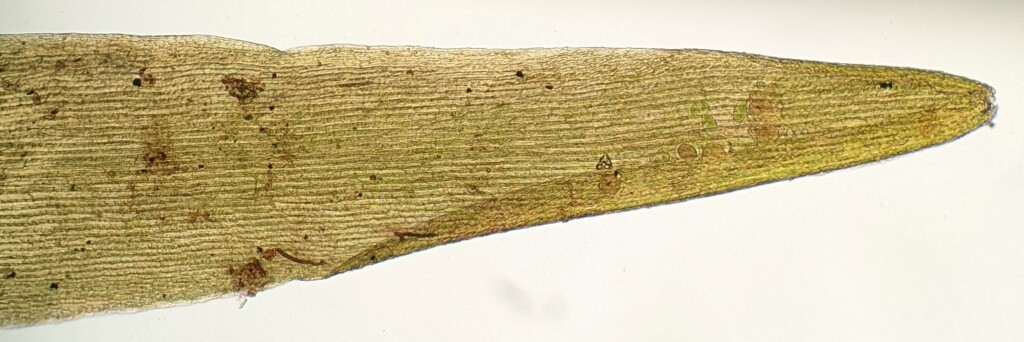Campylopus bicolor
(Hornsch. ex Müll.Hal.) WilsonDioicous. Asexual propagules absent. Turfs or dense tufts on soil or rocks, yellowish brown. Stems not branched, (0.5–) 2–5 (–7) cm tall, uniformly foliate when sterile, comose when fertile, black or dark brown, without rhizoids or with sparse brown rhizoids at base. Leaves erecto-patent when moist, erect to appressed when dry, narrowly ovate, 3.7–4.5 mm long, 0.6–0.9 mm wide, subtubulose; apex mostly rounded, cucullate, sometimes acute and concolorous, occasionally some leaves with a short hyaline point; costa percurrent or excurrent, occupying c. 2/3 leaf width; margins entire or denticulate at apex, plane, with a very weak border of narrower cells in lower half; laminal cells in apical half elliptic to rounded-rhomboidal, oblong to elongate, 17–50 μm long, 6–12 μm wide, weakly to conspicuously pitted; basal laminal cells oblong or rectangular, hyaline throughout and above alar region; alar cells weakly demarcated, mostly rectangular, 37–80 μm long, 10–13 μm wide, hyaline, unistratose. Sporophytes almost always absent. Seta c. 8 mm long. Capsule ovoid, c. 1.3 mm long, sulcate when dry. Operculum rostrate from conic base. Peristome Campylopus-type.
Wim, GipP, OtP, WaP, Gold, CVU, GGr, NIS, EGL, EGU, WPro, HNF, OtR, VAlp. New Zealand and South Africa. Widespread throughout the state except for the north-west usually in seepages or moist sites among rock outcrops or in wet heath or drainage lines.
 Spinning
SpinningKlazenga, N. (2012). Australian Mosses Online. 35. Leucobryaceae: Campylopus. http://www.anbg.gov.au/abrs/Mosses_online/Leucobryaceae_Campylopus.pdf.



